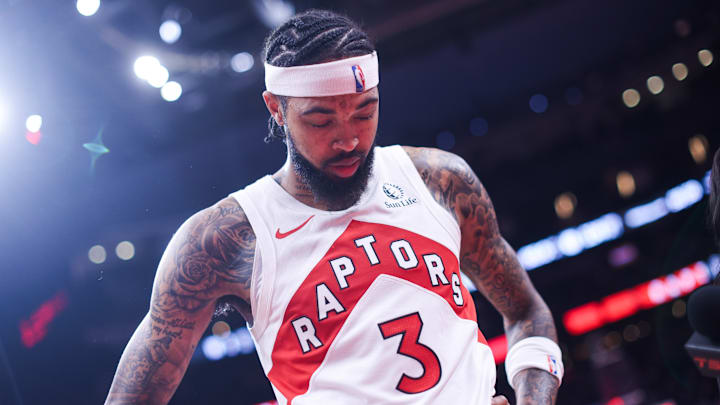Against the Bucks, Brandon Ingram spent the night hunting mismatches and feasting on Milwaukee's most glaring roster flaw. The Bucks won 122-116, but the film from this game should terrify them moving forward.
That's because the Bucks had 6-foot-5 Gary Trent Jr. guarding 6-foot-8 Ingram right away, which would be coaching malpractice when you're trying to compete for a championship for any other team. For the Bucks, it's understandable, since their other options for wing defense have glaring flaws of their own.
Ingram went off for 29 points, six rebounds, and three assists. As has always been part of his M.O., most of that damage came directly from exploiting Milwaukee's size disadvantage on the perimeter.
The Bucks have options, but their lineups lack wing-sized defenders
The matchup data tells the brutal story.
Trent defended Ingram for 34.2 partial possessions and gave up 4-of-6 shooting. The size mismatch has everything to do with that, making it target practice for a skilled wing scorer who can shoot over smaller guards all night.
That's just the reality of the Milwaukee Bucks' lineups right now. They're younger and faster, but they're also generally undersized on the wing unless either Kyle Kuzma (who can't score efficiently) or Taurean Prince (who isn't the best defender) is on the floor.
None of this is to argue that they don't have good defenders. Having Giannis Antetokounmpo and Myles Turner in your frontcourt will make up for a litany of mistakes. Cole Anthony and Ryan Rollins have always been dogged and determined on the defensive side of the ball. The problem is that none of the options at the point of attack are taller than 6-foot-5.
Perhaps the most frustrating part is that they actually have options sitting on the bench.
Andre Jackson Jr. was their best perimeter stopper last year, flying around and making life difficult for exactly these types of matchups. Instead, he's barely seeing minutes. Amir Coffey can be an option too, considering he's got legitimate size at 6-foot-7 and has shown he can defend multiple positions. But Rivers seems hesitant to trust anyone outside his established rotation, even when the established rotation is clearly failing.
So Milwaukee's choice is basically: get scored on by elite wings, or play guys who kill your offense. That's not a sustainable formula for playoff success.
This isn't just about one game against Ingram, of course. Wait until Milwaukee faces the likes of Jaylen Brown, Kevin Durant, or Paolo Banchero. Elite wing scorers are going to abuse this size mismatch all season long unless Rivers makes adjustments.
The blueprint for beating Milwaukee is going to be right there all season long: get your best wing scorer in isolation against Trent or whoever else the Bucks throw out there who's giving up three inches and twenty pounds. Attack that matchup relentlessly until Rivers is forced to change something.
This isn't to zone in on Trent, who has never lacked for effort on either side of the ball. He had 20 points in this game, which is great. But his lack of size will mean he isn't going to be the best option to play at small forward, and perhaps neither will AJ Green. You can't win a playoff series when your opponent's best player is scoring at will.
It's not the end of the world, of course, and undersized wings have succeeded in their roles in the past. But perhaps the coaching staff can give other options a chance, too. Jackson needs real minutes. Coffey deserves a shot. Something has to change because right now, Milwaukee has zero answers for the league's elite wing scorers.
They escaped with a win against Toronto, but better teams won't be as forgiving.
